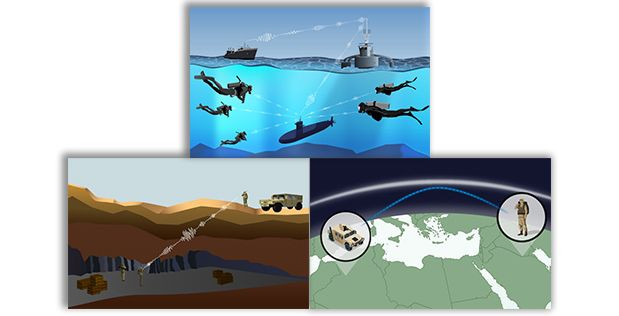DARPA’s AMEBA Program Could Allow Radio Communication In Places Where Conventional Wireless Doesn’t Work

In the current day and age, it’s hard to imagine life without radio transmitters and receivers — devices that make it possible to communicate through cellphones, radios and television, among other things. However, radio communication — especially one involving High Frequency (HF), Very High Frequency (VHF) and Ultra High Frequency (UHF) — still faces severe limitations, as these signals cannot propagate through media like water, soil and stones.
One possible solution to this problem would be to use Ultra Low Frequency (ULF) and Very Low Frequency (VLF) bands of radio waves, which can penetrate and propagate through these “radio-dead zones.” However, building antennas capable of transmitting and receiving ULF and VLF radio waves is an expensive proposition, as these structures would, by necessity, need to be gigantic and would thus consume vast amount of power.
The U.S. government’s Defense Advanced Research Projects Agency (DARPA) has now announced an initiative aimed at creating an infrastructure capable of expanding wireless communication and data transfer into undersea and underground media where such capabilities have so far been absent. In a statement released Friday, DARPA announced that its scientists were working to create portable ULF and VLF transmitters as part of its "A Mechanically Based Antenna" (AMEBA) effort.
“If we are successful, scuba divers would be able to use a ULF channel for low bit-rate communications, like text messages, to communicate with each other or with nearby submarines, ships, relay buoys, UAVs, and ground-based assets, through-ground communication with people in deep bunkers, mines, or caves could also become possible,” AMEBA Program Manager Troy Olsson from DARPA’s Microsystems Technology Office said in the statement.
In order to achieve this, the new VLF and ULF antennas would generate radio signals by mechanically moving materials harboring strong electric or magnetic fields, rather than relying on electronic circuits and power amplifiers to create oscillating electric currents. However, in order for this to become viable, powerful magnetic and electric fields would need to be packed into smaller volumes than has ever been achieved before for a ULF or VLF transmitter.
“Mobile low-frequency communication has been such a hard technological problem, especially for long-distance linkages, that we have seen little progress in many years,” Olsson said. “With AMEBA, we expect to change that. And if we do catalyze the innovations we have in mind, we should be able to give our warfighters extremely valuable mission-expanding channels of communications that no one has had before.”
© Copyright IBTimes 2025. All rights reserved.




















